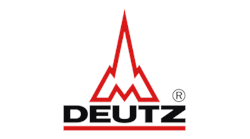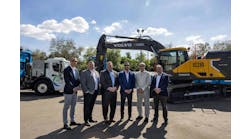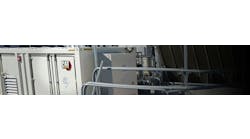The U.S. green building market is accelerating at a dramatic rate, according to McGraw-Hill Construction’s Green Outlook 2009: Trends Driving Change report, released last week at the Greenbuild International Conference and Expo in Boston. The value of green building construction starts was up five-fold from 2005 to 2008 (from $10 billion to $36-$49 billion), and could triple by 2013, reaching $96-$140 billion.
McGraw-Hill Construction’s Green Outlook 2009 estimates the value of the U.S. green building market over the next five years based on data found in the McGraw-Hill Construction Network -- powered by the Dodge database, construction industry surveys, data analysis and analysis of other indicators, including increases in LEED certification and government regulation.
“Green growth is phenomenal across the globe,” said Harvey Bernstein, vice president of Industry Analytics, Alliances and Strategic Initiatives, McGraw-Hill Construction. “The business opportunities afforded by green building, even in the midst of a global economic crisis, are real and recognized by industry players. Furthermore, green building has great potential to help tackle unemployment through green jobs, and can address other societal issues, such as creating healthier places where we live and work.”
Green building is the bright spot in an otherwise tough economy. U.S. Green Building Council members report green building to be less affected by the down market compared to non-green building, and homebuyers are willing to pay more for a green home. Perceived economic benefits are driving green building, including higher revenues, lower lifecycle costs, and lower operating costs, but builders and buyers are also motivated by health benefits, new government regulation, and pressure from global competition.
“Green building creates green jobs that save energy and money,” said Rick Fedrizzi, president, CEO, and founding chairman, U.S. Green Building Council. “Our community can help solve climate change and the economic crisis while building a new energy economy by putting the greening of existing buildings at the top of our agenda.”
McGraw-Hill Construction attributes green building’s rapid expansion to growing public awareness, an increase in government regulations, and recognition of bottom-line advantages. Since 2005, the perceived benefits of green building have increased and differentiated as people become more knowledgeable about green building. The decrease in operating costs is the most often cited benefit (13.6 percent, up from 8-9 percent in 2005), followed by the increase in building values (10.9 percent, up from 7.5 percent in 2005).
More information and specific green building projects can be found in the Green Outlook 2009 Report and on the GreenSource website http://greensource.construction.com/projects.





